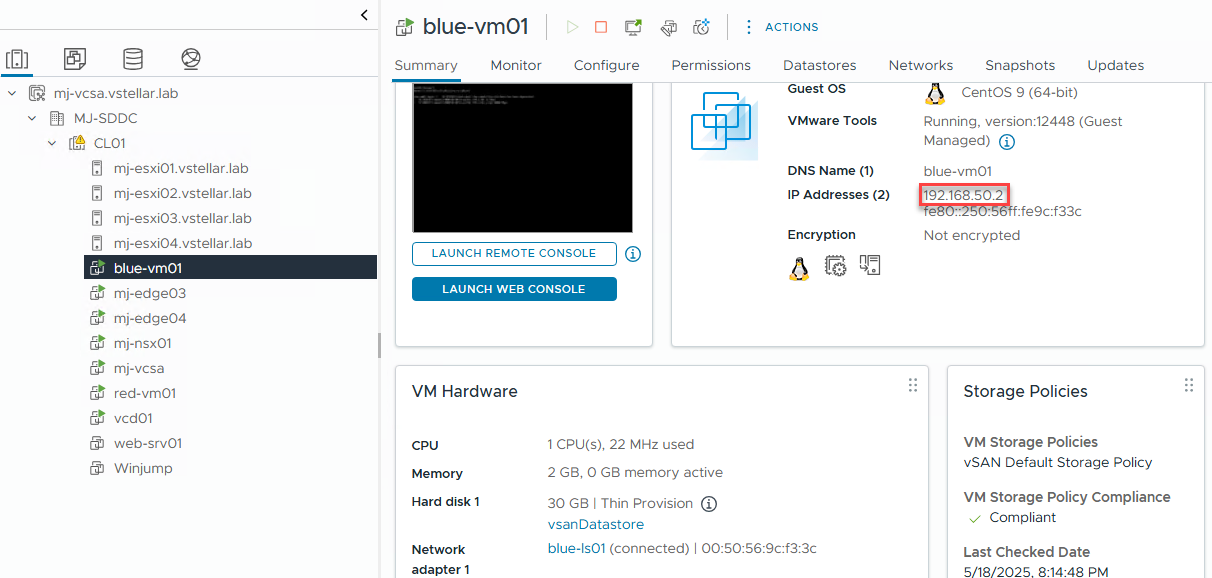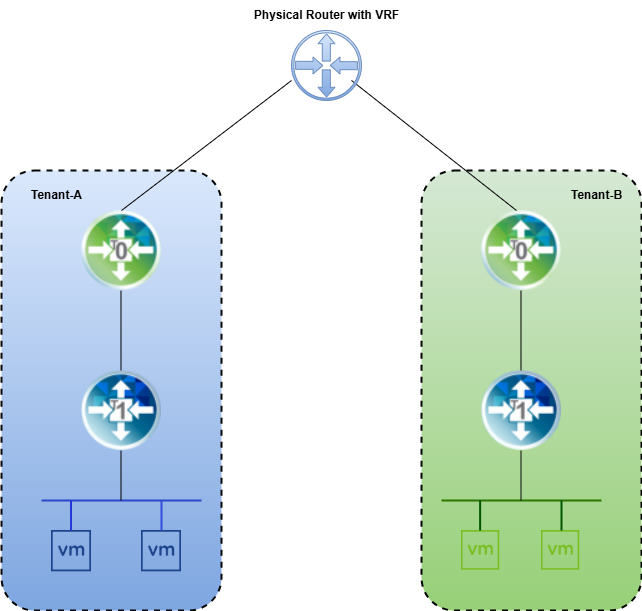Welcome to part-2 of the NSX VRF series. Part 1 of this series discussed VRF architecture, and part 2 demonstrated data plane isolation between the VRF instances.
In this post, I will demonstrate how to establish communication between 2 VRFs using VRF Route Leaking.
If you are not following along, I encourage you to read the earlier parts of this series from the links below:
1: NSX VRF Gateway – Architecture & Configuration
2: VRF Config Validation & Traffic Flows
By default, the data plane traffic between VRF instances is isolated in NSX. You can exchange traffic between 2 VRFs by configuring VRF Route Leaking. In this technique, static routes are configured on the VRF gateways to steer traffic towards other VRF gateways.
There are 2 supported topologies for VRF route leaking:
- Local VRF-to-VRF route leaking
- Northbound VRF leaking
Note: A multi-tier routing architecture is required for traffic to be exchanged in a VRF leaking topology, as static routes pointing to Tier-1 distributed router (DR) uplinks are necessary.… Read More







